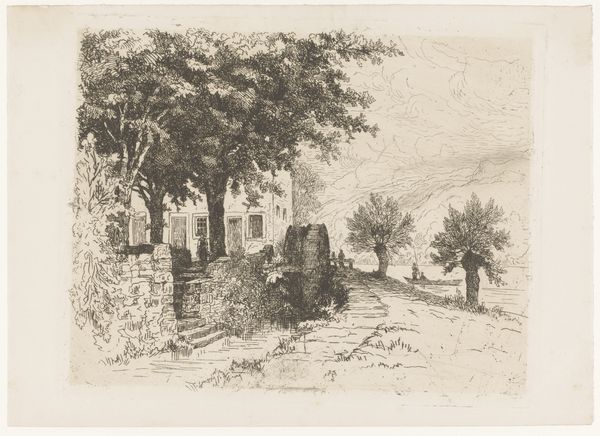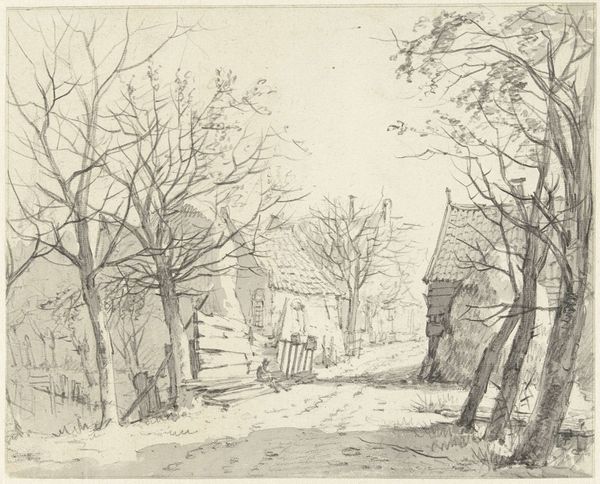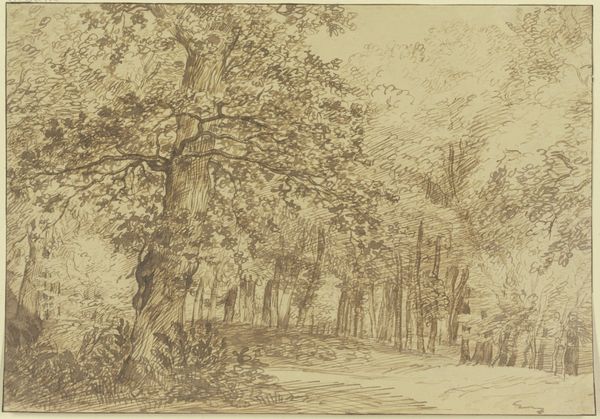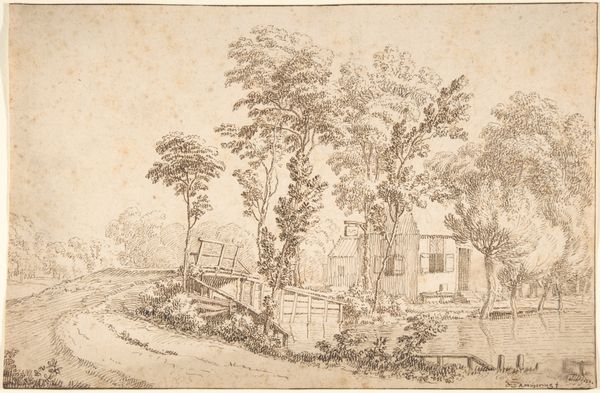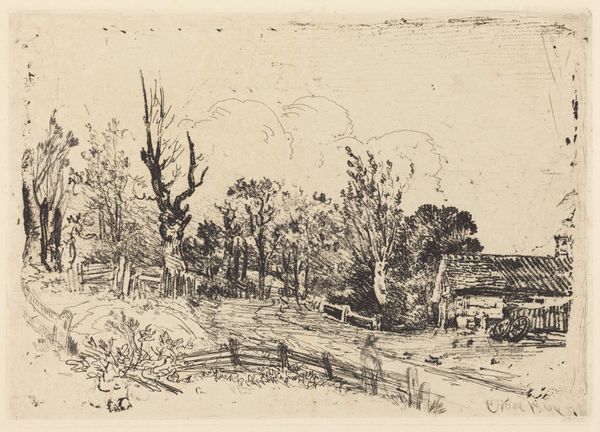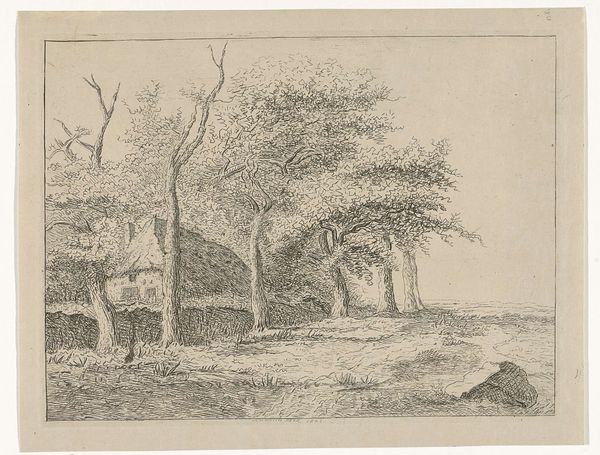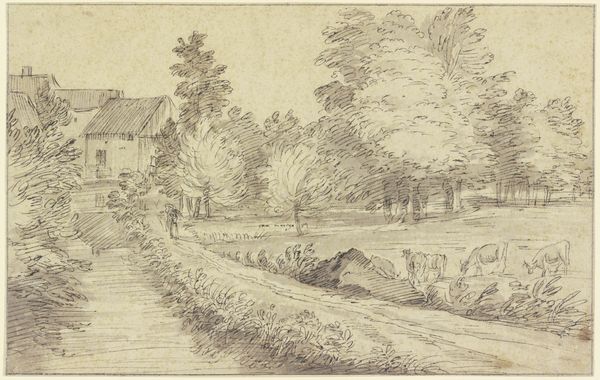
print, etching
# print
#
etching
#
landscape
#
etching
#
realism
Dimensions: height 253 mm, width 317 mm
Copyright: Rijks Museum: Open Domain
Editor: This is "Landschap met watermolen," or "Landscape with Watermill," an etching made sometime between 1868 and 1912. I’m immediately drawn to how much detail the artist, Maria van Hohenzollern-Sigmaringen, manages to get with just line work. What formal qualities do you find most striking? Curator: The interplay of light and shadow is rendered exquisitely through the variation in line density. Notice how the foreground, particularly the stonework and trees on the left, exhibits a denser concentration of lines, creating a tangible sense of mass and volume. This contrasts with the more sparsely etched areas in the background, effectively conveying depth and atmosphere. The composition itself is meticulously structured, isn’t it? Editor: It really is! The watermill acts as a kind of fulcrum balancing the two halves of the image. Curator: Precisely! The structural balance is reinforced by the horizontal orientation, stabilizing the image and directing our gaze smoothly from the immediate foreground, populated with strong verticals and diagonals, into the serene distance with subtle gradations. It demonstrates mastery of the medium through its textural richness. Are you responding to that at all? Editor: Yes, absolutely. The different textures—stone, foliage, water, sky—are so convincing despite the limited palette. It is a good reminder of how expressive a single color can be. It's all in the modulation of line! Curator: Indeed. The success lies not only in representing these different elements, but in achieving it solely through variations in line. Notice the deliberate imperfections, which imbue it with a sense of the artist's hand. Editor: That’s fascinating, considering its commitment to Realism as well! It almost feels impressionistic because of that delicate line work. Curator: True, and I feel like, although it is subtle, those tiny deliberate imperfections show how truly impressive art can be. Editor: I definitely agree! Thank you, I've really learned so much today about paying attention to visual composition.
Comments
No comments
Be the first to comment and join the conversation on the ultimate creative platform.
